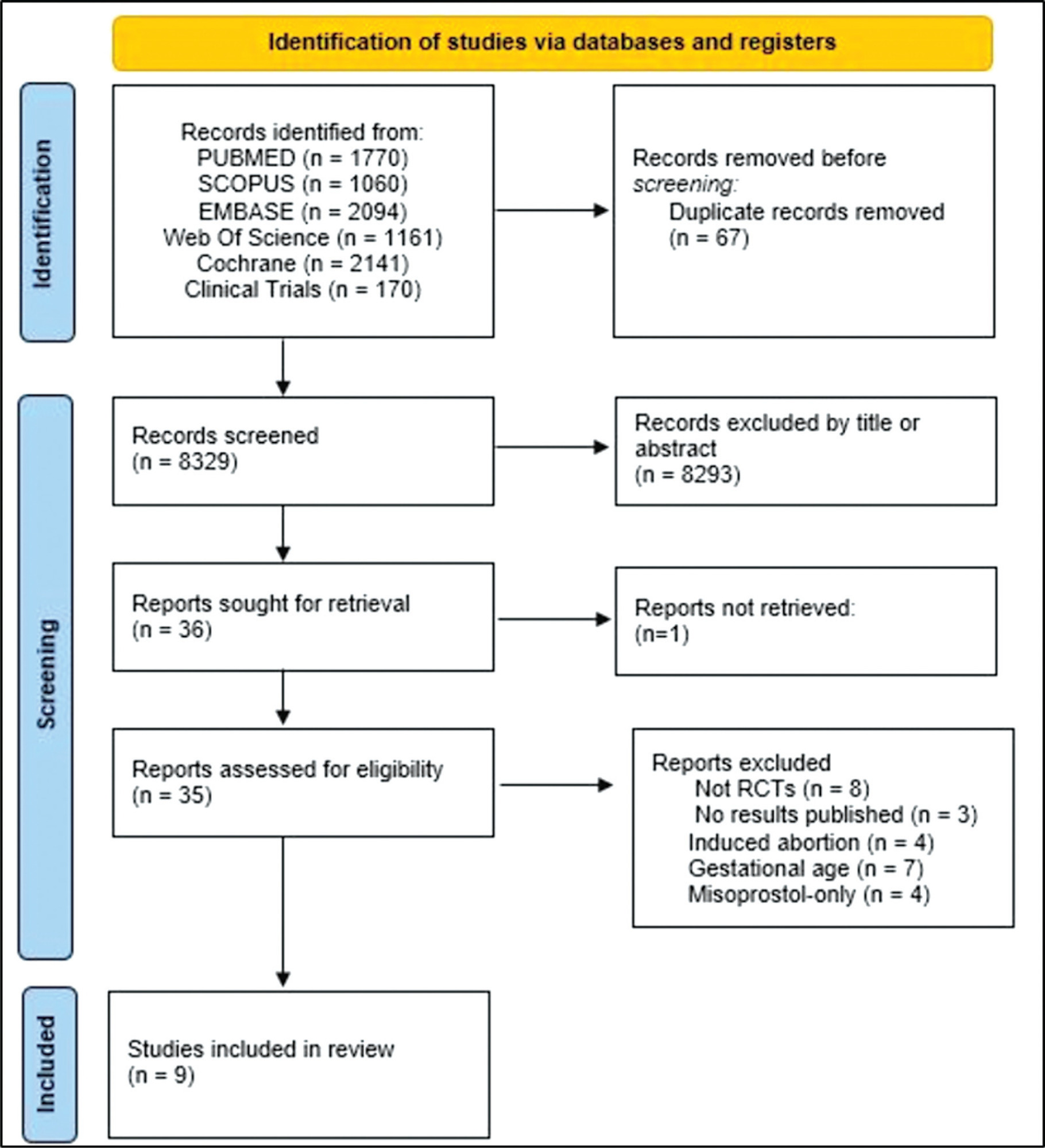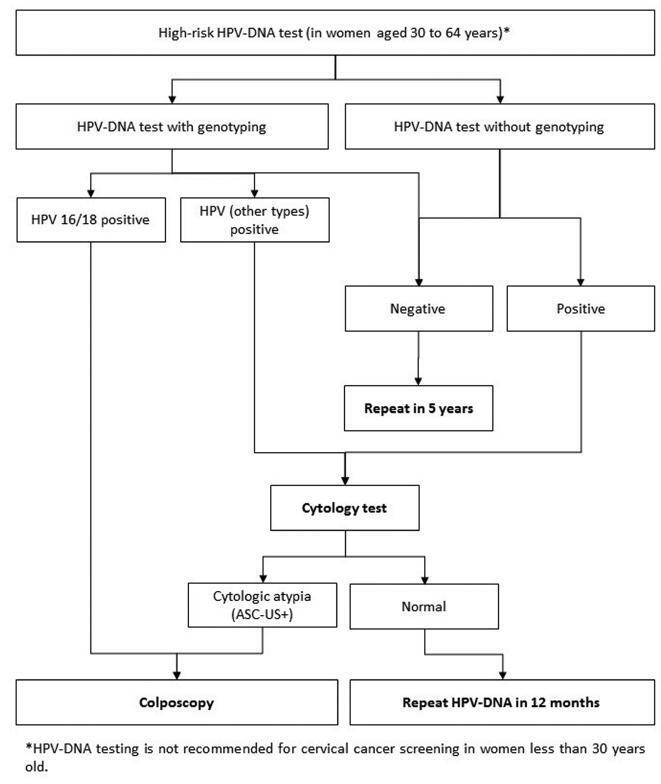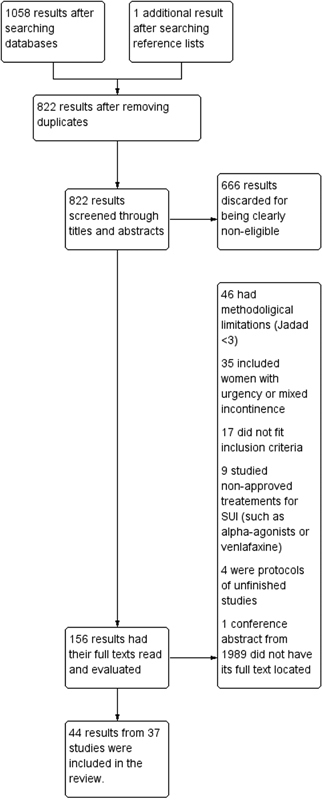-
04-16-1998
O Respeito às Publicações
Revista Brasileira de Ginecologia e Obstetrícia. 1998;20(2):66-66
-
Original Article04-12-1998
A study of hormone activity in premenopausal tamoxifen-treated women
Revista Brasileira de Ginecologia e Obstetrícia. 1998;20(9):533-536
Abstract
Original ArticleA study of hormone activity in premenopausal tamoxifen-treated women
Revista Brasileira de Ginecologia e Obstetrícia. 1998;20(9):533-536
DOI 10.1590/S0100-72031998000900007
Views154See morePurpose: to evaluate the effects of tamoxifen (TAM) on plasma levels of estradiol, progesterone, prolactin, luteinizing hormone (LH), follicle-stimulating hormone (FSH) and steroid hormone-binding globulin (SHBG) when given to premenopausal women in the doses of 10 and 20 mg/day for 22 days. Patients and Methods: a randomized double-blind study was performed with 43 premenopausal eumenorrheic women. The patients were divided into three groups: A (N = 15, placebo); B (N = 15, TAM 10 mg/day) and C (N = 13, 20 mg/day). They started taking an oral dose of TAM or placebo on the very first day of the menstrual cycle. Two hormone determinations were performed, both on the 22nd day of the menstrual cycle: the first in the cycle that preceded the use of the drug and the second, in the following cycle, after 22 days of using the medication. We used the Levine and Student tests in order to evaluate the homogeneity of the sample and the variation of the hormone determinations respectively. Results:serum levels of estradiol, progesterone and SHBG increased significantly in groups B and C. In group C, we also observed increase in serum level of FSH (p < 0.0045) and a fall in prolactin level (p < 0.0055). Conclusions: TAM promoted a significant increase in serum concentrations of estradiol, progesterone and SHBG either in the doses of 10 or 20 mg/day. However, significant increase in FSH and decrease in prolactin were obtained only with the dose of 20 mg/day.
-
Case Report04-12-1998
Pneumoperitoneum after cesarean section: a case report
Revista Brasileira de Ginecologia e Obstetrícia. 1998;20(5):289-292
Abstract
Case ReportPneumoperitoneum after cesarean section: a case report
Revista Brasileira de Ginecologia e Obstetrícia. 1998;20(5):289-292
DOI 10.1590/S0100-72031998000500009
Views209See morePneumoperitoneum, abdominal pain and paralytic ileus in the postoperative period are usually related to perforation of the gastrointestinal tract. The authors present a case of a patient submitted to cesarean section (abruptio placentae) who had a postoperative course of abdominal distention and abdominal pain. Abdominal X-ray showed important dilatation of the colon and small bowel. Pneumoperitoneum was seen on chest X-ray. An exploratory laparotomy was performed because of suspicion of intestinal perforation. The operation showed a marked dilatation of bowel, pneumoperitoneum, and infected hemoperitoneum and subaponeurotic hematoma (Escherichia coli), without any perforation. Postoperative recovery was good and antibiotics were given for 4 days (ceftriaxone + metronidazole). The patient was diseharged from hospital on the 7th day after laparotomy. After review of the literature the authors concluded that this case of pneumoperitoneum was probably related to infection by a gas-producing bacterium in a patient with clinical findings of paralytic ileus.
-
Case Report04-12-1998
Fetal turner syndrome and tetralogy of fallot associated with elevated maternal serum alpha-fetoprotein levels
Revista Brasileira de Ginecologia e Obstetrícia. 1998;20(5):283-287
Abstract
Case ReportFetal turner syndrome and tetralogy of fallot associated with elevated maternal serum alpha-fetoprotein levels
Revista Brasileira de Ginecologia e Obstetrícia. 1998;20(5):283-287
DOI 10.1590/S0100-72031998000500008
Views137See moreTurner syndrome and its complications, hydrops and cystic hygroma, can produce alterations in maternal serum biochemical markers used in screening for Down’s syndrome and neural tube defects (NTD). The authors report the case of a 37-year-old pregnant woman, screened for Down’s syndrome and NTD in the second trimester of pregnancy. The maternal serum alpha-fetoprotein (MSAFP) level was increased and the test was considered screen positive for NTD. A three-dimensional ultrasound investigation was performed, but no fetal or placental anomalies were found, indicating a case of unexplained increased msafp. In the third trimester severe oligohydramnios and disturbances in uteroplacental arterial circulation developed, requiring corticosteroid therapy and premature cesarean section at the 34th week of gestation. The female newborn was transferred to a neonatal ICU and tetralogy of Fallot and Turner syndrome were diagnosed. This case prompted the authors to review the literature on maternal serum biochemical markers in Turner syndrome and congenital heart defects and to propose a protocol for unexplained increased MSAFP.
-
Original Article04-12-1998
Assessment of the tolerability and cycle control of two low-dose oral contraceptives: an open-label study
Revista Brasileira de Ginecologia e Obstetrícia. 1998;20(5):273-280
Abstract
Original ArticleAssessment of the tolerability and cycle control of two low-dose oral contraceptives: an open-label study
Revista Brasileira de Ginecologia e Obstetrícia. 1998;20(5):273-280
DOI 10.1590/S0100-72031998000500007
Views195An open-label comparative study was conducted in nine centers in Brazil to evaluate the tolerability and cycle control of two low-dose oral contraceptives containing 20 mg ethynylestradiol/75 mg gestodene and 20 mg ethynylestradiol/150 mg desogestrel, during six treatment cycles. A total of 167 healthy sexually active women were enrolled (77 in the gestodene group and 90 in the desogestrel group) and 138 completed the six-cycle treatment period. A lipid and hemostatic profile was performed for a subgroup of first users. A total of 867 cycles were evaluated. Irregular bleeding did not occur in 95.4% of the cycles evaluated with gestodene and in 91.9% with desogestrel. Tolerability was good with both preparations but there was significantly more nausea in the desogestrel group. Cycle control was good with both preparations with a significantly lower incidence of irregular bleeding with gestodene when all cycles were considered. There were no clinically significant changes in the hemostatic profile. Lipid profile showed a trend to be more favorable after six cycles of treatment with both preparations. Women in the gestodene group did not present changes in the mean weight; in the desogestrel group there was a significant mean weight increase of 1 kg after six cycles of treatment. Compliance with treatment was good with both preparations. Results of this study demonstrated that low-dose preparations containing gestodene or desogestrel combined with 20 mg of ethynylestradiol are well-tolerated oral contraceptives that provide good cycle control.
Key-words CoagulationContraceptionCycle controlDesogestrelEstrogenGestodeneLipid profileLow-dose contraceptiveProgesteroneSee more -
Original Article04-12-1998
Endogenous sexual steroids and gonadotrophins in women with or without endometrial carcinoma: a comparative clinical study
Revista Brasileira de Ginecologia e Obstetrícia. 1998;20(5):267-271
Abstract
Original ArticleEndogenous sexual steroids and gonadotrophins in women with or without endometrial carcinoma: a comparative clinical study
Revista Brasileira de Ginecologia e Obstetrícia. 1998;20(5):267-271
DOI 10.1590/S0100-72031998000500006
Views133See moreObjective:To analyze the levels of endogenous sexual steroids and gonadotrophin in women with and without endometrial cancer. Methodology:We developed a clinical comparative study on 20 postmenopausal women with endometrial cancer and 20 postmenopausal women without endometrial cancer. The age, the postmenopausal time and the index of body mass were used as matching variables. The plasma levels of the endogenous sexual steroids were measured using radioimmunoassay and immunoenzymatic methods. For the statistic analysis we used the Student’s t test. Results: The levels of androstenedione (A), total testosterone (t) and free testosterone (TL) were higher in the women with endometrial cancer, and those of the luteinic hormone (LH) were significantly lower values in these women. We also observed that the ratio (E1/A) showed significantly lower in the group of women with cancer, while the ratio (E2/E1) did not present any differences between groups. Conclusions: We emphasize the potentiality of sexual steroids and gonadotrophins in the genesis of endometrial adenocarcinoma in postmenopausal women.
-
Original Article04-12-1998
Is the prognosis of the second twin worse ?
Revista Brasileira de Ginecologia e Obstetrícia. 1998;20(5):261-264
Abstract
Original ArticleIs the prognosis of the second twin worse ?
Revista Brasileira de Ginecologia e Obstetrícia. 1998;20(5):261-264
DOI 10.1590/S0100-72031998000500005
Views141See moreThe disadvantages of the second twin in respect of his birth conditions are of great concern. In this study we have reviewed 90 twin births occurred at the Maternidade da Encruzilhada (CISAM) in Recife, from January/92 to December/93, in order to compare perinatal variables between the first and second twin. Fetal presentation, way of delivery, birth weight, Apgar of the 1st and 5th minutes, occurrence of perinatal complications such as hyaline membrane syndrome, transitory tachypnea, and neonatal infection and, finally, the prognosis of each of the twins were evaluated. There was no statistical difference between the incidence of non-vertex presentation, cesarean section, low birth weight, Apgar < 7 in the 1st and 5th minutes and neonatal complication cited above. There was also no difference in perinatal mortality between the first and the second twin. Our results suggest a similar birth condition for both twins of a same pregnancy, therefore, the same perinatal care must be provided for each one.
-
Original Article04-12-1998
Accuracy of Clements’ test for evaluation of fetal lung maturation in preeclamptic patients
Revista Brasileira de Ginecologia e Obstetrícia. 1998;20(5):253-260
Abstract
Original ArticleAccuracy of Clements’ test for evaluation of fetal lung maturation in preeclamptic patients
Revista Brasileira de Ginecologia e Obstetrícia. 1998;20(5):253-260
DOI 10.1590/S0100-72031998000500004
Views144See moreObjectives: To determine sensitivity, specificity, positive and negative predictive values of the shake test (Clements) for evaluation of fetal lung maturation in preeclamptic patients. Methods: A prospective study for validation of a diagnostic method was conducted enrolling 163 preeclamptic patients (gestational age between 28-34 weeks) admitted at CAM-IMIP with indication for fetal maturity testing. Preeclampsia diagnosis and classification followed criteria of the National High Blood Pressure Working Group, 1990. Clements’ test was performed in three tubes and positive, negative or intermediate results were considered for analysis (related to presence or absence of fetal lung maturity). Accuracy parameters were calculated considering actual incidence of hyaline membrane disease (positive maturity = absent disease) after birth. Hyaline membrane disease was defined by criteria of CLAP, 1978. Statistical analysis was performed using c² test (Epi-Info 6.04b) with a 5% significance level. Results: Intermediate results were considered alternately as positive or negative for analysis. When considered positive, sensitivity was 87.9% and specificity 74.5% with positive and negative predictive values of 8.9.4% and 71.4% respectively – efficiency was 84%. When intermediate results were evaluated as negative, sensitivity decreased to 62% and specificity raised to 89.4% and positive and negative predictive values were 93.5% and 51.2% respectively (efficiency = 70%). False-positive results were rare and usually related to neonatal hypoxia: only 5 (6.5%) of 77 neonates with previous positive Clements had hyaline membrane disease. Nevertheless, false negatives were frequent: almost 40% for negative/intermediate results. Conclusions: Despite its limitations, Clements’ test remains a good method for investigation of fetal lung maturation in preeclamptic patients since false positive results are unusual. However sensitivity is low and results have be cautiously analyzed because of elevated rate of false negative results. A good policy is to complement fetal maturity investigation with other tests if a negative result is determined, specially in severe cases when confirmed maturity represents indication for interruption of pregnancy.
Search
Search in:
Tag Cloud
Pregnancy (252)Breast neoplasms (104)Pregnancy complications (104)Risk factors (103)Menopause (88)Ultrasonography (83)Cesarean section (78)Prenatal care (71)Endometriosis (70)Obesity (61)Infertility (57)Quality of life (55)prenatal diagnosis (51)Women's health (48)Maternal mortality (46)Postpartum period (46)Pregnant women (45)Breast (44)Prevalence (43)Uterine cervical neoplasms (43)









